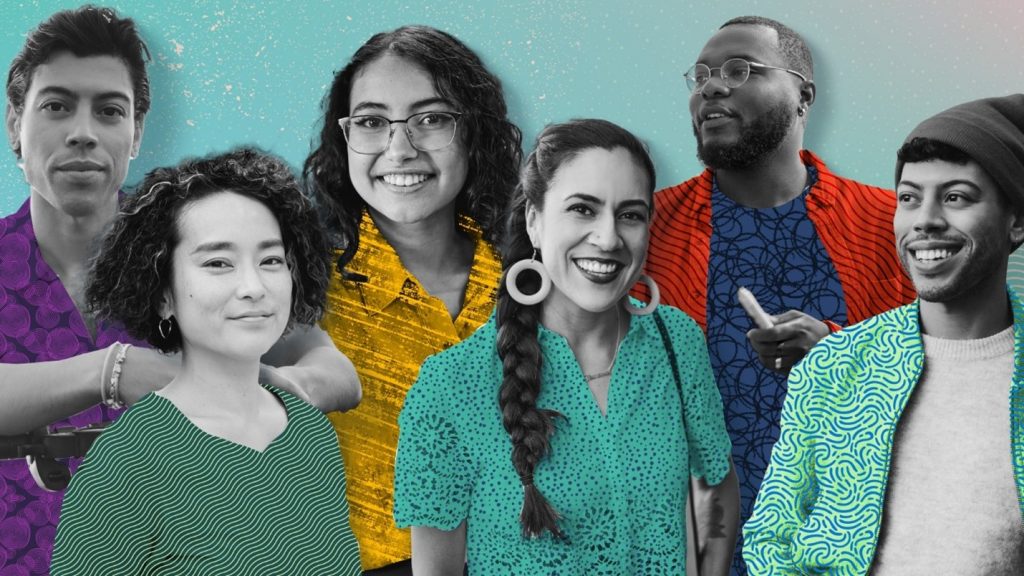Accessibility Training at Microsoft
Skilling is a critical part of building a culture of accessibility and helps foster innovation with accessibility in mind. One of the ways we embed accessibility into our culture at Microsoft is by providing mandatory training for all employees—97% of employees have completed the training to date. Over the last several years we’ve reached 2.7 million learners on accessibility around the world.

Today, we’re excited to announce the launch of our updated Accessibility Fundamentals learning path, free for all, and available now on MS Learn. Coming soon, any organization will be able to download a SCORM (Sharable Content Object Reference Model) course package to use within their learning environment. This will give anyone the opportunity to leverage existing materials, with an option for customization, while tracking learner progress, enabling organizations to identify gaps in knowledge and tailor accordingly. Updates to the learning path include creating accessible content in SharePoint, Word, PowerPoint and Outlook, accessibility evaluation and testing, fundamental AI concepts, creating accessible AI solutions, and applications of AI for the disability community.
Accessibility training at Microsoft focuses on filling gaps in accessibility knowledge with the goal of bringing awareness, increasing discoverability, and helping to build a more accessible workplace across the globe. As we refine our efforts on our journey, we believe it’s crucial to share the valuable lessons we’ve learned along the way and to empower other organizations to build out a robust accessibility training program.
Tips for creating an accessibility training program.
 First and foremost, accessibility training should not be viewed as a one-time project but as an ongoing commitment. Building a culture of accessibility requires continuous education, awareness, and adaptation to evolving standards and technologies. This means incorporating accessibility into the culture of the organization, ensuring that it remains a top priority across all departments and teams. One way we do this is by providing Disability Answer Desk (DAD) advocates with ongoing training on disability etiquette, the latest accessibility features in Microsoft products, and popular third-party assistive technology tools. Recently, all DAD advocates completed the JAWS® Certification program. We are proud to say that all DAD advocates are now JAWS certified after passing the online knowledge-based exam demonstrating proficiency in using the JAWS Screen Reader and further enhancing their ability to support customers.
First and foremost, accessibility training should not be viewed as a one-time project but as an ongoing commitment. Building a culture of accessibility requires continuous education, awareness, and adaptation to evolving standards and technologies. This means incorporating accessibility into the culture of the organization, ensuring that it remains a top priority across all departments and teams. One way we do this is by providing Disability Answer Desk (DAD) advocates with ongoing training on disability etiquette, the latest accessibility features in Microsoft products, and popular third-party assistive technology tools. Recently, all DAD advocates completed the JAWS® Certification program. We are proud to say that all DAD advocates are now JAWS certified after passing the online knowledge-based exam demonstrating proficiency in using the JAWS Screen Reader and further enhancing their ability to support customers.
Secondly, scaling your program through partnerships, internally and externally, can help fill verified gaps in accessibility knowledge. Employees, customers, and recent graduates have varying levels of expertise and specific needs. We’ve focused on training by skill, as this can easily be applied across roles and functions. Microsoft has partnered with organizations like the Department of Work and Pensions (DWP) in the United Kingdom, providing customized learning for 26,000 work coaches to better understand accessibility and to support job seekers with disabilities gain employment.
Accessibility training has given [employees] access to tools they didn’t know existed, which makes their day in the office, their day at work so much more fruitful. – Rich Corbridge, Chief Digital Officer for the Department of Work and Pensions
Lastly, a successful accessibility training program goes beyond theory; it needs practical application. Encouraging employees to actively practice accessibility principles through hands-on exercises, real-world projects, and community engagement can make a substantial difference in retaining knowledge. Attend disability and accessibility events, engage with the disability community, disability advocates, and accessibility experts, and consider joining your company’s disability employee resource group. Continue to practice your learnings by integrating accessibility considerations into your development and design processes. This way, employees can directly see the impact of their efforts, fostering a sense of ownership and accountability.
By investing in accessibility training, organizations can tap into a vast pool of talent, enhance their brand reputation, and ultimately create a more accessible and welcoming digital landscape for everyone.
Next steps
- Complete the new Accessibility Fundamentals Learning Path.
- Explore Microsoft Accessibility Resources and Training.
- Get in touch @MSFTEnable on X.
- Contact Disability Answer Desk








